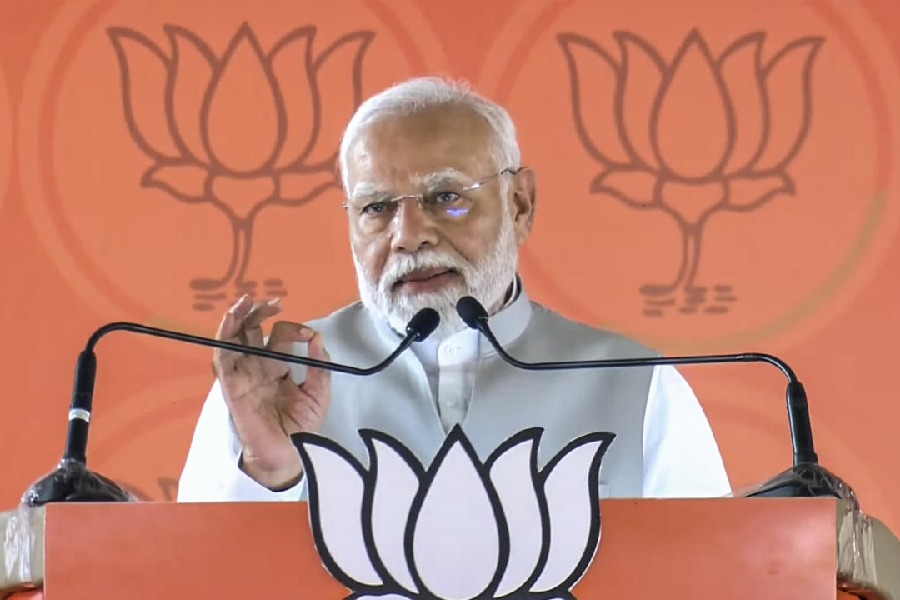“The past is over,” Jawaharlal Nehru had declared in his “Tryst With Destiny” speech and added, “… it is the future that beckons to us now.” The future was not a providential given, however, as Nehru hastened to clarify in the succeeding lines. In fact, it was a conscious project to be built on the modern epistemological building blocks of socialism, secularism and democracy.
“That future is not one of ease or resting but of incessant striving so that we may fulfil the pledges we have so often taken and the one we shall take today. The service of India means the service of the millions who suffer. It means the ending of poverty and ignorance and disease and inequality of opportunity.”
From the vantage point of 2024, the post-Independence nationalist project represented by Nehru seems akin to an old, hulking ship, withered in shape and loose in the joints, reeling under the threat of itself getting submerged as a relic of ‘the past’.
Nehru was an idealist; but he was certainly not a naïve idealist who negated the importance of history. Much of Nehru’s foundational beliefs on national progress were also shared by contemporary nationalist leaders of the non-Western world, such as Kemal Atatürk in Turkey, Gamal Abdel Nasser in Egypt, and Sukarno in Indonesia. The particular historical consciousness underlying the Nehruvian project, as explicated in The Discovery of India, was that of a shared journey towards an ever-more progressive future. Such a progressive future was often sketched out in the materialist terms of modern utilitarianism — broadly, the philosophy advocating ‘greatest good for the greatest number’ — as can be seen in Nehru’s aforementioned reference to “service of the millions who suffer”.
Alongside, the Nehruvian framework integrated a Hegelian or Marxist understanding of history as a site for the redemption of modern man, breaking the shackles of the past and galloping towards higher, substantive states of freedom. When Nehru declared the “past is over”, what he meant was the regressive hold of the organising principles of the past (of narrow caste/community-based solidarities and religion-based cosmologies) had entered their sunset phase, destined to gradual irrelevance. Hence, the political question of primary import lay in determining the best method to hasten the demise of the stultifying forces of ‘the past’.
Thence stemmed Nehru’s ambiguous fascination with the Chinese nationalist project directed by Chairman Mao. Nehru found much to admire in the socialistic objectives of the Maoist method. He also acknowledged the transformative character of certain Chinese policies, such as large-scale land reforms and mass mobilisation for food production. At the same time, he was averse to the Maoist indifference to democratic negotiation and the systemic requirement of violent conflict. “It is absurd to imagine,” Nehru wrote of India’s communists, “that out of conflict the social progressive forces are bound to win.” The “inherent disruptive character” of the communist method was thus held by Nehru to be fundamentally incompatible with India’s complex arrays of social diversities.
The primary competitor to the Nehruvian nationalist project in India’s post-Independence history has been the Hindu nationalist project. This project ought not to be confused merely with the political forces of the RSS/Jana Sangh/BJP as significant elements of this Hindu nationalist vision were also shared by the right-wing of the Congress umbrella. As the historian, William Gould, explained, in Hindu Nationalism and the Language of Politics in Late Colonial India, the language of the politics of the Congress in the colonial United Provinces was steeped in a religious idiom similar to that of the Hindu Mahasabha. This was because the pre-Independence Congress (despite its formal self-presentation as a secular and progressive force) as well as the Hindu Mahasabha found themselves constrained to build their ground-level mobilisation on the forces of Hindu revivalism and incipient Hindu communalism. In India as a Secular State, Donald Eugene Smith persuasively argued that the praxis of Indian secularism (especially at the level of states) saw little disjuncture between formal secularism and State policies mandating cow-protection and restricting religious conversion. In his recent book, Hindutva as Political Monotheism, Anustup Basu traces the genealogy of the “Hindu nation” in terms of the long and ongoing process of negotiation with Western modernity. This complex process of metamorphosis of the varied peoples of the subcontinent — classified by the British authorities as ‘Hindus’ — into a singular “Hindu nation” has been chugging along over the span of the last two centuries and has involved “cultivating a unified Hindu theology for a monothematic religious passion and inventing a concomitant organismic nationhood.”
In the Hindu nationalist teleology, the inauguration of the Ram temple by Prime Minister Narendra Modi marks a turning point of historical importance. The ubiquitous draping of religious paraphernalia accompanying the ceremony, much like the one that shrouded the inauguration of the new Parliament, are secondary objects of ornamental significance. The central significance of the moment lies in the reconfiguration of the dominant mode of ‘sovereignty’ undergirding the Indian nation-state. The constitutional republic of India had located the sovereignty of the Indian nation-state within the institution of Parliament and (by extension) within the body of the ‘people of India’ who elected Parliament. Parliamentary sovereignty, in turn, had rested on three pillars: secularism, socialism and democracy. The hollowing out of the first two constitutive concepts by the 1970s (an outcome of the substantive shortcomings of the Nehruvian project in removing poverty and inter-group violence) eventually resulted in the first major challenge to parliamentary sovereignty as witnessed in the denouement of the Emergency.
The second major challenge came with Hindutva’s ascendance, which has successfully reduced Parliament to a rubber-stamp body. Indeed, we now have a new Parliament, inaugurated in a quasi-religious ceremony, where parliamentarians can be summarily suspended by the dozens. The Ayodhya ceremony must be viewed as the second important moment of Modi’s consecration of ‘electoral kingship’. Whereas the parliamentary ceremony effectively transferred de-facto sovereignty from Parliament to within the body of a sacralised supreme leader, the Ayodhya ceremony is meant to fuse this ‘electoral kingship’ with popular sovereignty where the notion of ‘people’ is indistinguishable from Hindu nationhood.
It is true that the practices of democracy (such as group-based power-bargaining) have long been successfully integrated into the Indian political imagination through the processes of vernacularisation brought largely through the influx of caste and region-based parties. However, a substantive democratic framework has struggled to take root in the country because of the perpetual undernourishment of the other constitutive pillars of secularism and socialism. The latter have remained tenuous concepts, of little import to the everyday lives of the citizenry. The pandemic laid bare the ghastly inequalities lying within the nation as almost three-quarters of the population still claim dependence on the State for basic foodstuff. Caste and communal violence have remained not episodic conflicts but everyday lived realities baked into the system.
The failure of socialism and secularism in transforming the lives of the countrymen has been the motor force of the periodic democratic crises of the last half a century. In each of these momentous conjunctures, we can trace the emergence of popular protest movements not only fuelled by resentment over unmet material aspirations but also driven by a vague desire for a renewed sense of popular sovereignty manifest in the prevailing feeling that the ‘Centre can no longer hold’ under the weight of unmet social pressures coming together from various directions.
This kind of democratic crisis was vividly captured by the French political philosopher, Claude Lefort, in The Political Forms of Modern Society: Bureaucracy, Democracy, Totalitarianism. Lefort argued that modern democracy was hobbled by a latent uncertainty about its own foundations and legitimacy unlike the clear lines of authority embedded in traditional structures. This fragmentation of the authority of the State caused by never-ending contestations and negotiations among competing groups sometimes led to a crisis of democratic legitimacy. The consequent pining for popular sovereignty is then leveraged by totalitarian groups, which, according to Lefort, explained the success of the radical fascist and communist political formations in the first half of the 20th century.
This Lefortian crisis of representative democracy is a valuable frame through which we can view not just the ascendance of Hindu nationalism but also the popular approval towards a Hindu nationalist-inflected vision of ‘electoral kingship’. The consequences of the triumph of the latter might unfold in a manner similar to what had transpired in Lefort’s Europe of the last century: the devastation of the framework of the constitutional republic and an acceptance of the legitimacy of ruthless violence as an active building block of a providentially sanctioned nationhood.
Asim Ali is a political researcher and columnist










